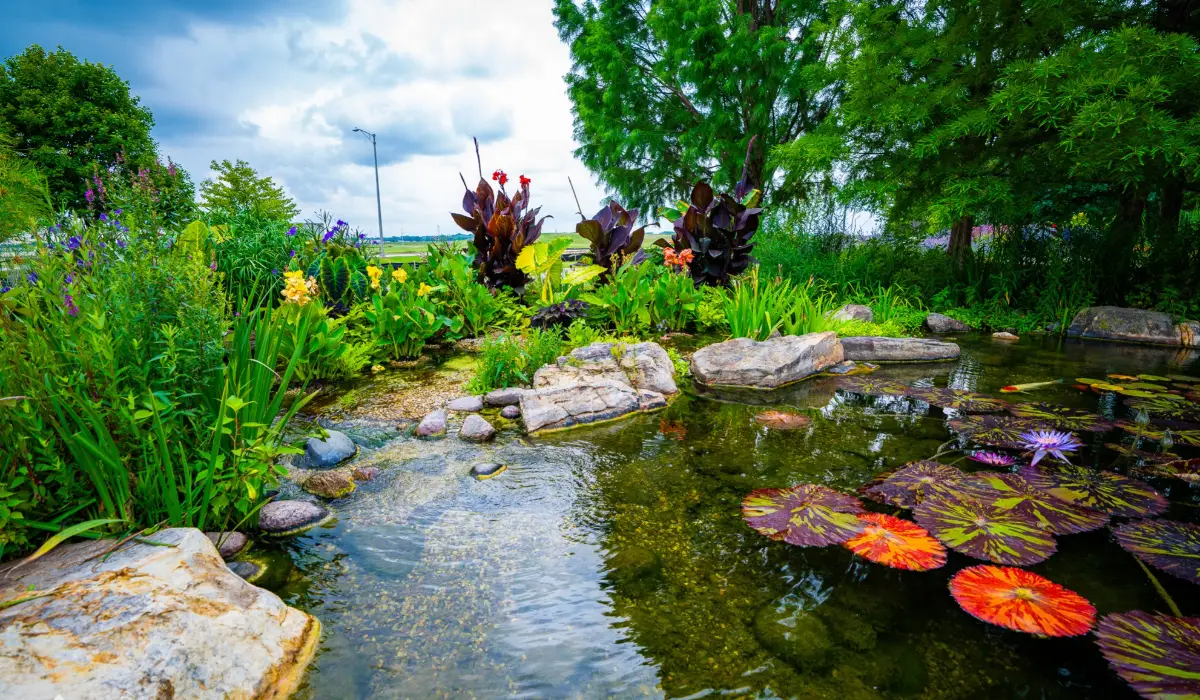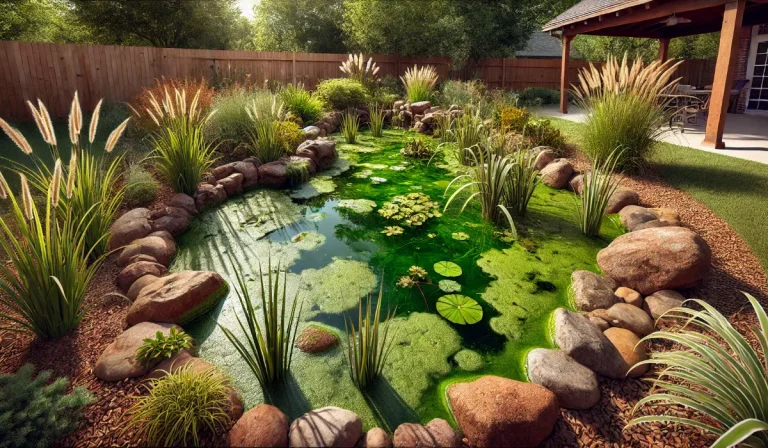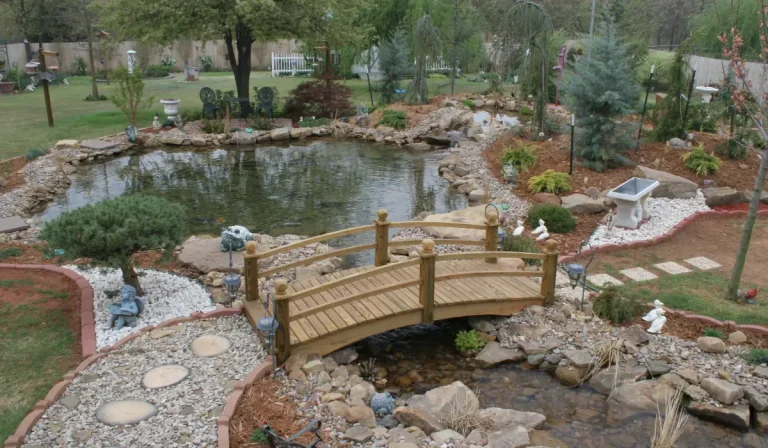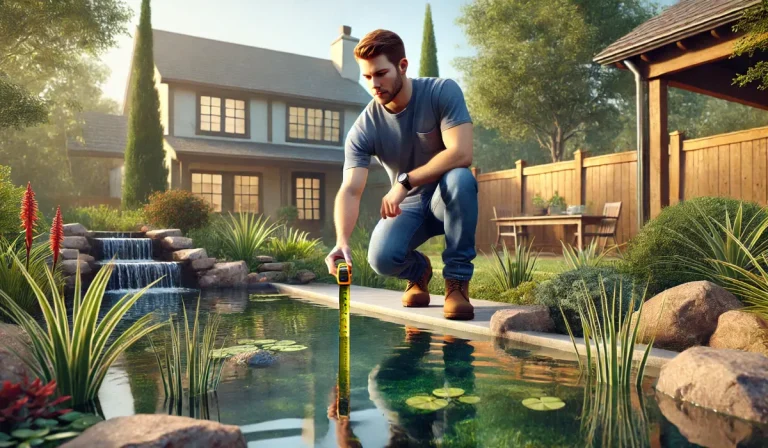How to Locate a Leak in Your Pond or Water Feature
Ponds and water features add beauty and tranquility to any outdoor space, but leaks can quickly turn them into a source of frustration. If you suspect your pond or water feature is leaking, it’s essential to address the issue promptly to prevent water waste, damage to your property, and harm to your pond’s ecosystem. In this guide, we’ll explain how to identify a leak, pinpoint its location, and determine whether a DIY approach or professional assistance is the right solution.
Signs Your Pond or Water Feature May Be Leaking
The first step in locating a leak is recognizing the signs that something isn’t right. While some water loss is natural due to evaporation, excessive or unusual changes in water levels typically indicate a problem.
1. Water Level Drops
A steady drop in water levels is one of the most obvious signs of a leak. If you’re topping off your pond or water feature more than usual, especially during cooler months, it may not be due to evaporation alone.
2. Wet Spots Around the Pond
Look for soft or soggy ground near your pond or water feature. Persistent wet areas often signal a leak in the liner or plumbing system.
3. Higher Water Bills
If your pond uses an auto-fill system to replenish water, a leak may cause your water bill to spike as the system compensates for the lost water.
4. Equipment Malfunctions
Reduced water flow in a waterfall or fountain, or unusual noises from the pump, may indicate a leak affecting the overall system’s performance.
Common Causes of Pond Leaks
Understanding the potential sources of leaks can help narrow down your search. Ponds and water features have several components where leaks commonly occur.
1. Liner Damage
Tears, punctures, or general wear and tear in the pond liner are frequent culprits. Over time, liners can degrade due to UV exposure, sharp objects, or shifting rocks.
2. Plumbing Issues
Leaks in pipes, fittings, or seals can lead to water loss. Plumbing problems are often harder to detect since they may occur underground or behind decorative elements.
3. Waterfall or Stream Edges
Improperly placed rocks or liner folds around waterfalls or streams can cause water to spill over the edges instead of flowing back into the pond.
4. Evaporation vs. Leak
It’s normal for ponds to lose a small amount of water daily to evaporation, especially in hot or windy weather. However, if the water loss exceeds several inches per day, a leak is likely to blame.
Steps to Pinpoint a Leak
Now that you’ve identified signs of a leak and potential causes, it’s time to pinpoint its exact location. This step-by-step process will help you systematically investigate your pond or water feature.
Step 1: Turn Off the Pump
Begin by filling your pond or water feature up to its full level. Then turn off the pump to determine whether the leak is in the plumbing or the pond itself.
-
-
- If the Water Level Drops Further: The leak is likely in the liner or pond basin.
- If the Water Level Stabilizes: The leak is likely in the plumbing system or pump.
-
Let the water sit for 24 hours and monitor the level to identify the area of water loss.
Step 2: Inspect the Pond Liner
Carefully examine the pond liner for visible damage.
-
-
- Look for tears, punctures, or folds where water may be escaping.
- Use food coloring or dye to track water movement. Add a few drops near suspected areas and watch where the dye flows—it will lead you to the leak.
-
Step 3: Check Plumbing and Equipment
Leaks in pipes, fittings, or pumps can cause significant water loss.
-
-
- Inspect all visible plumbing for cracks, loose connections, or worn-out seals.
- Test the pump for proper operation and look for water pooling near its housing.
-
Step 4: Examine Waterfall and Stream Edges
Waterfall and stream leaks often occur when water spills over the edge due to displaced rocks or misaligned liners.
-
-
- Inspect the edges for wet spots or areas where water might be escaping.
- Adjust rocks and liners as needed to direct water back into the pond.
-
DIY vs. Professional Help
While some leaks can be identified and repaired by homeowners, others require the expertise of a professional.
When to DIY
-
- Small tears or punctures in accessible areas of the liner.
- Adjusting rocks or liners around waterfalls and streams.
- Thinning overgrown plants in the stream or waterfalls.
When to Call a Professional
-
- When you cannot locate the leak.
- Leaks in underground plumbing or hard-to-reach areas.
- Extensive liner damage that requires replacement.
- Complex water feature designs where issues are not immediately visible.
- Replacing components like pump or fittings.
Professionals like Garden Ponds Unlimited® have specialized tools and experience to locate and fix leaks efficiently, saving you time and potential frustration.
Preventing Future Leaks
Once the leak is resolved, take steps to minimize the chances of future issues.
1. Regular Maintenance
Perform routine inspections of the liner, pump, plumbing, and edges to catch small problems before they escalate.
2. Proper Installation
Ensure that all components, including liners and plumbing, are professionally installed to prevent common leak causes.
3. Seasonal Adjustments
Monitor your pond or water feature during seasonal changes, as freezing and thawing cycles can cause damage to liners and pipes.
How Garden Ponds Unlimited® Can Help
At Garden Ponds Unlimited®, we specialize in diagnosing and repairing pond and water feature leaks. Whether you’re dealing with a small puncture in your liner or a more complex plumbing issue, our experienced team has the tools and expertise to restore your water feature to its full glory.
We also provide maintenance services to keep your pond or water feature in optimal condition, ensuring it remains a stunning centerpiece in your outdoor space.
Locating a leak in your pond or water feature doesn’t have to be overwhelming. By understanding the signs of a leak, investigating potential causes, and following a systematic process, you can pinpoint the issue and address it effectively.
Whether you choose to tackle the repair yourself or call in professionals, taking swift action will protect your investment and keep your pond or water feature healthy and beautiful. For expert assistance and high-quality pond repair services, contact Garden Ponds Unlimited® today!





